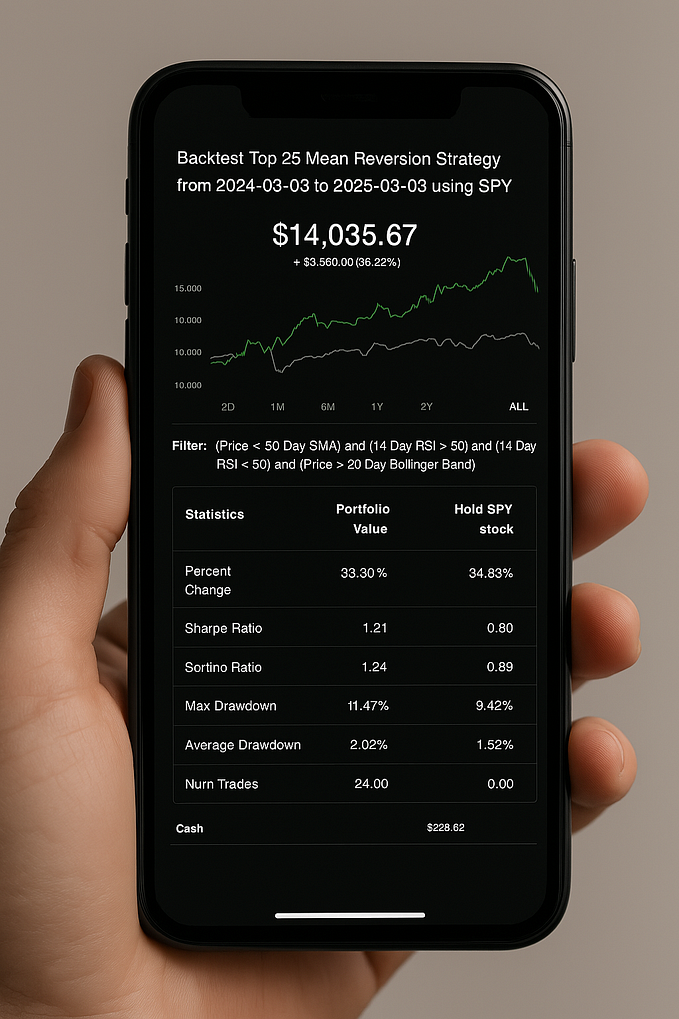Cautious Optimism and Innovative Responses in the Rebound: BTC Market Dynamics and the Launch of the Seagull Product | Weekly Market Insights Recap

During the official YouTube livestream at 8 PM on September 10th, Daniel Yu, Head of Asset Management at Matrixport, analyzed the reasons behind BTC’s price breaking through $57,000 again this week (September 9th-15th) and how investors can achieve attracted returns in a single-side market.
Key takeaways from the livestream
On September 10th, the crypto market continued its rebound, with BTC price breaking through $57,000 again, and the market sentiment improved. Although this uptrend has boosted investor confidence, potential uncertainties and risks in the market still exist. Matrixport’s newly launched structured product, the Seagull, offers investors a new strategy for securing returns in a single-side market.
Analysis of Market Volatility Causes
- Market Reaction to Fed Rate Cut Expectations
Recent discussions about the possibility of the Federal Reserve cutting interest rates by 50 basis points have attracted widespread attention. This expectation has provided a short-term boost to risk assets like BTC. This is because rate cuts typically mean increased liquidity and lower funding costs, which may encourage more investors to shift funds from traditional markets to high-risk assets like Bitcoin. However, due to increasing global economic uncertainties, the market remains cautious about the long-term effects of the rate-cut policy.
Investors should closely monitor future economic data, employment conditions, and Federal Reserve policy statements to avoid excessive optimism due to short-term benefits. Additionally, in the context of rising global inflation, supply chain tensions, and increasing geopolitical risks, investors need to remain vigilant about the long-term market trends.
- Technical Rebound of BTC
On September 10th, the price of BTC broke through $56,500 and continued to rise to $57,000. This rebound lifted some market sentiment, with some investors viewing it as a signal of the market returning to an upward trend. However, this rise is more of a technical rebound, a correction after the previous market overselling, lacking sufficient positive catalysts. Therefore, the sustainability of this rebound needs further observation. Investors should remain cautious in the current market environment, avoid blindly chasing the rise, and carefully assess potential pullback risks by combining technical analysis and market sentiment changes to avoid significant impacts from short-term market fluctuations.
- Record High in Long-Term BTC Holdings
The supply of BTC long-term holders has surpassed 4 million coins for the first time. This data indicates that more investors are choosing to hold Bitcoin for the long term, reducing short-term speculative behavior. The increase in long-term holders shows investors’ confidence in Bitcoin’s long-term value, which helps stabilize the market and reduce panic selling caused by short-term volatility. This trend will help alleviate market liquidity pressure and provide stable support for Bitcoin’s future price trends. Additionally, as long-term investor confidence strengthens, the Bitcoin market may attract more institutional investors in the future.
- Potential Links Between Politics and Market Volatility
The upcoming U.S. presidential election and Trump’s campaign are market catalysts that cannot be ignored in the coming months. If Trump is re-elected, the market expects that his policies may push investors to shift funds to safe-haven assets such as Bitcoin. Political dynamics will become an important factor in future Bitcoin market fluctuations. Investors should pay close attention to developments in this area and prepare corresponding market response strategies.
- Decreased Market Liquidity and Increased Volatility
Recently, the market has shown a trend of declining liquidity and increasing volatility. Bitcoin’s short-term rebound occurred in a low-liquidity environment, which increased market vulnerability. Investors should pay special attention to risk management in the current high-volatility environment and flexibly adjust investment strategies to cope with potential drastic market changes, avoiding unnecessary losses when liquidity is insufficient.
- Impact of ETF Fund Outflows on the Market
The continuous outflow of ETF funds has exerted significant selling pressure on the market, especially against the backdrop of a weak performance in the US market. This phenomenon further weakens market liquidity and may continue to pressure market prices in the short term. Although the current outflow of ETF funds has a certain negative impact on the market, as more institutional investors gradually enter the Bitcoin market, liquidity issues are expected to ease in the long term. The addition of institutional funds will bring more stability and confidence to the market.
Options Market and Institutional Behavior in the Current Environment
Analyzing multiple technical indicators (such as 25 Delta Skew and implied volatility curves), it can be seen that although short-term market sentiment remains cautious, investors’ views on market trends remain optimistic in the long term. Due to the increase in speculative and hedging activities in the market, short-term volatility may continue. Therefore, it is recommended that investors remain patient in the current environment and consider long-term holding strategies.
Investment Directions to Consider
- Utilizing Financial Instruments for Market Hedging
In the current complex market environment, investors should adopt a cautious investment approach. The uncertainty of the global macroeconomic landscape has increased, and geopolitical factors may further contribute to market volatility risks. It is recommended that investors adopt a diversified investment strategy, allocate assets reasonably, and reduce reliance on a single market to cope with potential market fluctuations. By diversifying investments across various assets, investors can effectively lower the overall risk of their investment portfolio and enhance their ability to handle market uncertainties.
During periods of high market volatility, investors can use financial instruments such as options and ETFs for risk management and hedging. Options can be used to hedge against market uncertainty and volatility, while ETFs provide a relatively stable investment channel.
Investors should avoid excessive trading and maintain a moderate investment strategy, especially in the face of frequent short-term market fluctuations. By using hedging tools appropriately, investors can better mitigate short-term risks while preserving long-term investment opportunities.
- Focusing on Volatility and Considering Long-Term Investment Strategies
Although the market has rebounded, it has not yet returned to previous highs, and the market will need more time to confirm the sustainability of the rebound in the short term. In terms of long-term trends, market sentiment remains relatively optimistic. Market participants are still taking advantage of market declines to lower their holding costs or increase long positions, showing confidence in future long-term trends.
However, due to the increase in speculative and hedging activities in the market, short-term volatility may continue. Therefore, it is recommended that investors remain patient in the current environment and consider long-term holding strategies.
- Effectively Utilize Tools to Enhance Returns in a Single-side Market
In response to the current high volatility and clear single-side market trends, Matrixport has launched “Seagull,” a product suitable for single-side markets. Seagull is based on an options combination strategy, integrating features of “Dual Currency” and “Trend Smart,” and is available in both bullish and bearish directions. This allows investors to choose a suitable strategy based on their market expectations. The settlement method is determined by the range in which the expiration price falls.
For example, as of early September 2024, with BTC’s price at $56,500, you invest in a Seagull bullish BTC-USDT product with a benchmark price of $58,000, a high yield price of $58,500, and an expected annualized yield of 18.85% to 279%. If BTC expiration prices are above $58,000 (inclusive), you can receive an annualized yield of 279%. If the BTC expiration price is between $56,500 and $58,000, you can receive an 18.85% annualized yield. If the BTC expiration price is between $58,000 and $58,500, you can receive an annualized yield of 18.85% to 279%. If the BTC expiration price falls below $56,500, the product offers a discount buying and premium selling protection mechanism, you can receive an 18.85% annualized yield and convert your USDT to BTC at $56,500.
Highlights of Seagull:
1). Targeted for One-Sided Market Movements: Whether it is bullish or bearish, investors can obtain considerable returns through accurate judgment of market trends. If the market meets expectations, the returns will be even more substantial.
2). Layered Return Structure: Seagull can provide flexible returns within different price ranges, ensuring that investors have opportunities for returns under various market conditions. When the market price exceeds a certain point, investors will receive a higher annualized yield. When the market remains within a certain range, investors can enjoy a basic APY. This flexibility allows Seagull to adapt to different market conditions, ensuring that investors have opportunities for returns in any market environment.
3). Low Investment Entry Requirement: With a minimum investment of only 100 USDT, 0.01 BTC, or 0.1 ETH, Seagull is suitable for both novice and senior investors. Whether investors want to try new strategies or senior investors seek new return opportunities, Seagull can meet their needs.
It is important to note that although the Seagull performs well in a single-side market, its returns are capped. In extreme market conditions, investors may not be able to capture all market gains fully. Additionally, while the Seagull product provides some downside protection, investors may still face potential loss risks during severe market downturns. Therefore, investors should allocate assets reasonably and adjust their investment strategies flexibly based on their risk tolerance when using the Seagull.
Check out the recording of our YouTube livestream for more details: https://www.youtube.com/watch?v=LjyGAmdZLFY
About Matrixport Weekly Market Insight
[Matrixport Weekly Market Insight] is an interactive knowledge-sharing column newly launched by Matrixport, and will be livestreamed each week on the Matrixport official YouTube Channel. We will invite industry-leading product managers, top analysts, and KOLs to discuss investment strategies under different market situations and share their investment experiences.
Subscribe to the Matrixport YouTube Channel to stay tuned on the latest market developments.
Disclaimer: The above content is for informational purposes and reference only. The content does not constitute investment advice. Digital asset transactions can be precarious and volatile. Investment decisions should be made after carefully considering individual circumstances and consulting financial professionals. Matrixport is not responsible for any investment decisions based on the information provided in this content.
Download Matrixport Official APP: https://invest.matrixport.com/downloadPage/en
Matrixport Official X:https://x.com/Matrixport_EN
Matrixport Official Community:https://t.me/Matrixport_EN








